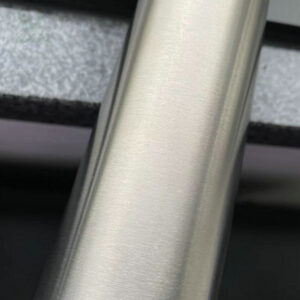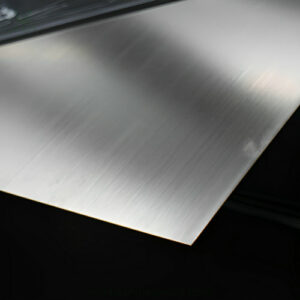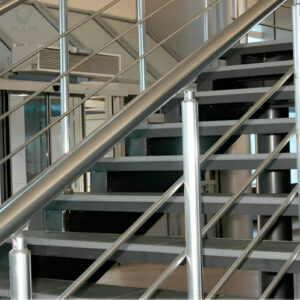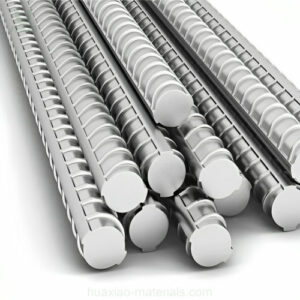Industry News
Excellent and advantageous Stainless steel supplier in China——Huaxiao Metal

Curious about 201 stainless steel? Well, it’s like the ‘cool kid’ in the stainless steel family. With its excellent corrosion resistance and high tensile strength, it’s perfect for various applications. Picture this: it’s a cost-effective option that won’t break the bank but still delivers on performance. 201 stainless steel, with its lower nickel content, is like a budget-friendly superstar. Need kitchenware that shines? Appliances that last? Look no further! From pots and pans to automotive components, 201 stainless steel has got you covered. So, when you’re searching for a reliable stainless steel supplier, don’t forget about this versatile grade. It’s the secret ingredient to affordable durability and style. Embrace the coolness of 201 stainless steel and watch your projects shine!
So,What is 201 stainless steel?
201 is a material of stainless steel. 201 stainless steel generally refers to the general term of 201 stainless steel and acid-resistant steel. 201 stainless steel refers to steel that is resistant to corrosion by weak media such as atmosphere, steam and water, while acid-resistant steel refers to steel that is resistant to corrosion by chemically aggressive media such as acid, alkali, and salt. This product belongs to high-manganese and low-nickel stainless steel with low nickel content and poor corrosion resistance. It is widely used in various desktops, countertops, kitchen utensils, outdoor decoration projects, urban decoration industries and low-end household products.
If you are considering buying stainless steel recently and are not sure which model you want, you can look at the next few questions you may be interested in, and we have prepared detailed answers.


201 stainless steel is an austenitic alloy composed primarily of iron, chromium, and nickel, with additional elements such as manganese and nitrogen. Compared to other stainless steel grades, 201 stainless steel has a higher manganese content, which provides enhanced mechanical properties and corrosion resistance.
The composition of 201 stainless steel typically includes approximately 16-18% chromium, 3.5-5.5% nickel, 5.5-7.5% manganese, and trace amounts of nitrogen. The higher manganese content contributes to the formation of an austenitic microstructure, improving the alloy’s strength, ductility, and workability.
The presence of chromium in 201 stainless steel provides excellent corrosion resistance, allowing it to withstand exposure to various corrosive environments. Nickel enhances the alloy’s toughness and helps maintain its austenitic structure even at low temperatures.
The specific composition of 201 stainless steel gives it a unique combination of properties, making it suitable for a range of applications. It offers good formability, high tensile strength, moderate corrosion resistance, and the ability to achieve an attractive finish through polishing.
When it comes to stainless steel, both 304 and 201 grades are commonly used. While they share similarities, they also have distinct differences in their composition and properties. This article aims to compare 304 and 201 stainless steel, highlighting their key characteristics and applications.

304 Stainless Steel: It is an austenitic alloy consisting of iron, chromium (18-20%), and nickel (8-10.5%). It also contains small amounts of manganese and carbon.
201 Stainless Steel: This austenitic alloy comprises iron, chromium (16-18%), and nickel (3.5-5.5%). It has a higher manganese content (5.5-7.5%) and lower nickel content compared to 304 stainless steel.
304 Stainless Steel: It offers excellent corrosion resistance, high tensile strength, and good formability. It is also resistant to oxidation and can withstand high temperatures.
201 Stainless Steel: It provides moderate corrosion resistance and good formability. Its higher manganese content enhances its mechanical properties, making it stronger and more ductile than 304 stainless steel.
304 Stainless Steel: It is widely used in various industries, including architecture, food processing, chemical processing, and kitchenware. Its superior corrosion resistance makes it suitable for outdoor and high-temperature applications.
201 Stainless Steel: Due to its lower cost and reasonable corrosion resistance, it is commonly used in applications such as cookware, sinks, utensils, and decorative pieces.
Conclusion: While 304 stainless steel offers superior corrosion resistance and strength, 201 stainless steel provides a cost-effective option with good mechanical properties. The choice between the two depends on specific requirements, budget constraints, and the intended application.
Introduction: When considering the usability of stainless steel, it is important to understand its weldability and formability. This article focuses on the welding and forming characteristics of 201 stainless steel, shedding light on its ease of use in manufacturing and fabrication processes.

| Grades | Density (*103 kg/m³) | Grades | Density (*103 kg/m³) |
00Cr30Mo2 | 7.64 | 00Cr19Ni13Mo3 | 7.98 |
00Cr27Mo | 7.67 | 0Cr19Ni12Mo3 | 7.98 |
1Cr17Mo | 7.70 | 0Cr25Ni20 | 7.98 |
1Cr15 | 7.70 | 0Cr18Ni12Mo2Cu2 | 7.98 |
3Cr16 | 7.70 | 00Cr18Ni14Mo2Cu2 | 7.98 |
00Cr27Mo | 7.67 | 0Cr19Ni12Mo3 | 7.98 |
1Cr17 | 7.70 | 00Cr19Ni13Mo3 | 7.98 |
00Cr17 | 7.70 | 0Cr18Ni11Nb | 7.98 |
7Cr17 | 7.70 | 0Cr17Ni12Mo2N | 7.98 |
1Cr12 | 7.76 | 00Cr17Ni14Mo2 | 7.98 |
1Cr13 | 7.76 | 0Cr17Ni12Mo2N | 7.98 |
0Cr13Ai | 7.75 | 00Cr17Ni13Mo2N | 7.98 |
00Cr12 | 7.76 | 0Cr18Ni16Mo5 | 8.00 |
0Cr13Al | 7.75 | 1Cr17Ni7 | 7.93 |
2Cr13 | 7.75 | 0Cr23Ni13 | 7.93 |
3Cr13 | 7.75 | 1Cr17Ni8 | 7.93 |
0Cr18Ni13Si4 | 7.75 | 1Cr18Ni9 | 7.93 |
00Cr18Mo2 | 7.75 | 1Cr18Ni9Si3 | 7.93 |
0Cr26Ni5Mo2 | 7.80 | 0Cr19Ni9 | 7.93 |
1Cr17Mn6Ni5N | 7.93 | 00Cr19Ni11 | 7.93 |
00Cr18Ni9S13 | 7.93 | 0Cr19Ni9N | 7.93 |
1Cr17Mn6Ni6N | 7.93 | 0Cr18Ni11Ti | 7.93 |
1Cr18nNi8Ni5N | 7.93 | 0Cr17Ni17Al | 7.93 |
201 stainless steel exhibits good weldability. It can be easily welded using common techniques such as gas tungsten arc welding (GTAW), gas metal arc welding (GMAW), and shielded metal arc welding (SMAW). However, preheating and post-weld annealing may be required to reduce the risk of cracking and improve the overall weld quality.
201 stainless steel is known for its excellent formability. It can be easily shaped, bent, and formed using various processes, including roll forming, deep drawing, and stamping. Its higher manganese content compared to other stainless steels enhances its ductility, allowing for intricate and complex forming operations.
Conclusion: In summary, 201 stainless steel offers favorable weldability and excellent formability. It can be readily welded using standard welding techniques, while also providing versatility in forming processes. These characteristics make 201 stainless steel a suitable choice for manufacturers and fabricators seeking ease of use and versatility in their projects.
Introduction: 201 stainless steel is a versatile material that finds numerous applications across various industries. This article explores the common uses and industries that rely on the unique properties of 201 stainless steel.



201 stainless steel is commonly used in kitchen appliances such as sinks, cookware, and utensils. Its corrosion resistance, heat resistance, and aesthetic appeal make it a popular choice in the culinary industry.
The automotive sector utilizes 201 stainless steel in components like exhaust systems, trim, and decorative elements. Its resistance to corrosion and oxidation, coupled with its affordability, makes it an attractive option for automotive manufacturers.
201 stainless steel is employed in architectural applications, including building facades, handrails, and decorative features. Its versatility, durability, and ability to withstand harsh weather conditions make it ideal for exterior and interior design elements.
The furniture industry incorporates 201 stainless steel in the production of chairs, tables, frames, and decorative accents. Its modern appearance, strength, and resistance to corrosion contribute to its widespread use in furniture manufacturing.
Due to its hygienic properties, 201 stainless steel is widely utilized in the food processing industry. It is employed in equipment, machinery, storage containers, and surfaces that require high levels of cleanliness and resistance to corrosion.
Conclusion: 201 stainless steel finds application in diverse industries, including kitchen appliances, automotive manufacturing, architecture, furniture, and food processing. Its unique combination of corrosion resistance, affordability, and aesthetic appeal makes it a preferred choice for numerous applications.
Introduction: When it comes to stainless steel, different grades offer distinct advantages. In this article, we will explore the specific advantages of choosing 201 stainless steel over other grades, highlighting its unique properties and benefits.

One of the primary advantages of 201 stainless steel is its affordability compared to other stainless steel grades. It offers similar corrosion resistance and durability while being more cost-effective, making it an attractive option for budget-conscious projects.
201 stainless steel exhibits high strength and hardness, allowing it to withstand significant external forces and resist deformation. This makes it suitable for applications that require structural integrity and durability.
201 stainless steel possesses good corrosion resistance, particularly in mildly corrosive environments. It resists oxidation and atmospheric corrosion, making it suitable for various indoor and outdoor applications.
Compared to some other stainless steel grades, 201 stainless steel offers excellent formability. It can be easily shaped, bent, and formed into desired configurations, allowing for greater design flexibility.
With its bright, shiny finish, 201 stainless steel provides an attractive aesthetic appeal. It is often used in decorative applications where visual appeal is essential, such as architectural elements, furniture, and kitchen appliances.
Conclusion: Choosing 201 stainless steel offers several advantages over other stainless steel grades, including its cost-effectiveness, high strength and hardness, excellent corrosion resistance, easy formability, and aesthetic appeal. These factors make it a versatile choice for a wide range of applications, providing a balance of performance and affordability.
Introduction: While 201 stainless steel offers various advantages, it is essential to consider its limitations and drawbacks. In this article, we will discuss the potential limitations associated with using 201 stainless steel, providing a balanced perspective for decision-making.

Compared to other stainless steel grades, 201 stainless steel has lower corrosion resistance, particularly in aggressive environments or exposure to certain chemicals. It may be susceptible to pitting or crevice corrosion under certain conditions.
201 stainless steel has lower temperature resistance than some other stainless steel grades. It may experience reduced mechanical properties and potential embrittlement when exposed to extremely high or low temperatures.
While 201 stainless steel can be welded, it requires careful consideration due to its composition. It may have lower weldability compared to more common stainless steel grades, and special precautions, such as preheating and post-weld annealing, may be necessary to maintain the desired properties.
Unlike some stainless steel grades that are non-magnetic, 201 stainless steel exhibits magnetic properties. This may limit its suitability for certain applications where non-magnetic characteristics are required.
Compared to higher-grade stainless steels, 201 stainless steel generally has lower strength and toughness. It may not be the ideal choice for applications that require exceptional strength or impact resistance.
Conclusion: While 201 stainless steel offers several advantages, it also has certain limitations and drawbacks. It is important to consider factors such as reduced corrosion resistance, lower temperature resistance, limited weldability, magnetic properties, and lower strength and toughness when evaluating its suitability for specific applications. By understanding these limitations, engineers and designers can make informed decisions and select the appropriate stainless steel grade for their requirements.
Introduction: When considering stainless steel options for various applications, cost is often an important factor. In this article, we will explore how the price of 201 stainless steel compares to other stainless steel grades, providing insights into its affordability.

One of the key advantages of 201 stainless steel is its competitive price point. Compared to higher-grade stainless steel alloys like 304 or 316, 201 stainless steel generally offers a more cost-effective solution without compromising on basic functionality.
201 stainless steel contains lower nickel content compared to grades like 304 stainless steel. Nickel is an expensive alloying element, and its reduced presence in 201 stainless steel contributes to its relatively lower price. This makes 201 stainless steel an attractive option for budget-conscious projects.
The price of stainless steel, including 201 grade, is influenced by market dynamics, such as the availability of raw materials, global demand, and economic conditions. It is advisable to stay updated with market trends and consult reputable suppliers for accurate pricing information.
While 201 stainless steel offers cost advantages, it is important to evaluate its suitability for specific applications. Higher-grade stainless steel alloys may be more appropriate for industries that require enhanced corrosion resistance or specific mechanical properties, despite their relatively higher cost.
Conclusion: 201 stainless steel provides a cost-effective alternative to higher-grade stainless steel alloys. Its competitive pricing, attributed to the lower nickel content, makes it an appealing option for various applications where cost efficiency is a primary consideration. However, it is crucial to balance the price advantage with the specific requirements of each project and consider other factors like corrosion resistance and mechanical properties to ensure the optimal stainless steel grade is selected.



As a trusted stainless steel supplier, we specialize in providing high-quality 201 stainless steel products to meet the diverse needs of our customers. With our extensive industry knowledge and expertise, we ensure that the stainless steel we offer meets the highest standards of quality and performance.
By choosing us as your supplier, you gain access to a comprehensive range of 201 stainless steel products. Our inventory includes various forms and sizes, allowing you to find the perfect fit for your specific application requirements. Whether you need sheets, coils, or custom-cut pieces, we have you covered.
We take pride in our commitment to customer satisfaction. Our dedicated team is ready to assist you every step of the way, from product selection to timely delivery. We prioritize open communication and prompt responses to ensure a seamless and hassle-free experience for our customers.
Furthermore, we understand the importance of competitive pricing. We strive to offer cost-effective solutions without compromising on quality. Our streamlined supply chain and strong industry partnerships enable us to provide competitive prices, making us a reliable and cost-efficient choice for your stainless steel needs.
When it comes to 201 stainless steel, trust us as your reliable supplier. Contact us today to discuss your requirements and discover how we can meet your stainless steel needs with our top-quality products and excellent customer service.
In conclusion, 201 stainless steel is a versatile and cost-effective material that offers several advantages for various applications. Its unique composition and properties make it suitable for a wide range of industries, including construction, kitchenware, automotive, and more.
Some key benefits of 201 stainless steel include its excellent corrosion resistance, high strength, and good formability. It can be easily welded and formed, allowing for flexibility in design and fabrication. Additionally, its lower nickel content makes it a more affordable option compared to other stainless steel grades.
However, it is important to consider some limitations of 201 stainless steel. It may not be suitable for applications that require extreme corrosion resistance or high-temperature environments. Additionally, its lower nickel content can result in reduced resistance to certain chemicals and acids.
When sourcing 201 stainless steel, it is crucial to work with reputable suppliers who can provide high-quality products. Look for suppliers with a proven track record, extensive industry knowledge, and a wide range of stainless steel offerings.
Overall, 201 stainless steel is a reliable choice for many applications, offering a balance of performance, cost-effectiveness, and versatility. By understanding its properties and limitations, customers can make informed decisions and find reputable suppliers to meet their specific needs.
Copyright@2023 Huaxiao Metal Corporation Limited . All rights are reserved
WhatsApp us
Feel free to contact us!
If you need our products, please leave us a message with the specific specifications and quantity through the window on the right!
Reply within 24 hours